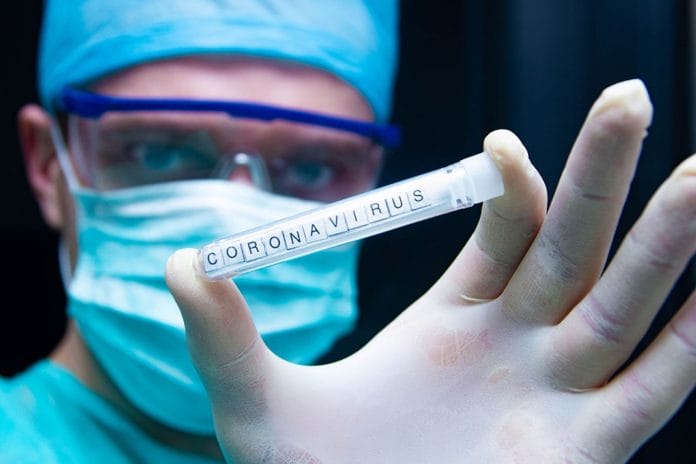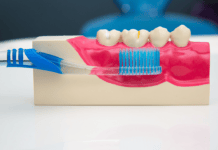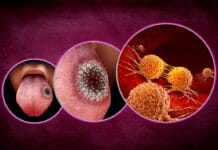Editor’s Note: Information about COVID-19 is changing on a daily, sometimes hourly, basis. We have made every attempt to ensure this article is up-to-date at the time of publication, but with the rapid changes occurring, some information may have changed since publication. Please visit https://www.coronavirus.
Declared a “public health emergency of international concern” on February 11, by the World Health Organization (WHO), the coronavirus that presented itself in Wuhan, China, is now known as COVID-19.1
In COVID-19, the “CO” stands for corona, the “VI” for virus, and “D” for disease. Formerly, this disease was referred to as “2019 novel coronavirus” or “2019-nCoV.” As the virus breached the borders of Wuhan City, the Hebei Province, and eventually China, it has earned the title bestowed by WHO.
On January 31, 2020, the U.S. Department of Health and Human Services secretary declared it a U.S. public health emergency. The Center for Disease Control (CDC) and the American Dental Association (ADA) have made public statements regarding precautions that dental practices need to take in order to address this “emergency of international concern.”2 The CDC continues to actively monitor this outbreak and update their recommendations at www.cdc.gov.
Hygienists find themselves on the front line of enforcing compliance guidelines in the dental practice and need to be aware of current recommendations. Following the CDC guidelines is a best practice even if the dental practice is located in one of the 22 states that dictate their own OSHA plan that may, or may not, incorporate CDC guidelines into mandatory regulatory requirements. In order to incorporate protocols to protect dental staff and patients, dental teams should review what COVID-19 is, why it is different from the “seasonal flu,” and what the CDC recommended preventative measures are to minimize transmission.
COVID-19
This unique coronavirus, originally reported in Wuhan City, Hebei Province, China, is part of a larger family of viruses that are common in different species of animals. Camels, bats, and cats have been documented originators of the virus, although an intermediary animal host may have allowed the virus to “jump” to humans.
Although rare, coronaviruses do infect people and can spread from person to person. This is the case with COVID-19. It was also the case with SARS, which emerged in 2002. SARS is another well-known coronavirus that originated in southeast China.
As of the date this article was written, SARS has proven to infect fewer people but had a larger mortality rate. According to the National Center for Biotechnology Information (NCBI), SARS is estimated to have infected more than 8,500 people, spreading to 30 countries within six months. The death rate was high, with a crude mortality of 9%, or approximately 765 patients.3 Compare that to COVID-19 data as of February 15, which shows an infection tally of more than 58,000 people in 25 countries in just two months with a crude mortality rate of less than 1% at approximately 1,500 deaths.4
Tracking may be underreported, as patients with mild symptoms may not seek medical care. There is currently no vaccine available for COVID-19. Symptoms are primarily respiratory in nature with fever, cough, and shortness of breath appearing within two to 14 days of exposure.1
COVID-19 vs. The “Seasonal Flu”
As of February 15, COVID-19 has been positively identified in 15 patients in the United States5. The potential for additional cases is high as the cruise ship, Diamond Princess, is reporting nearly 300 confirmed cases on board with a number of U.S. citizens listed as passengers.6 The current protocol, when COVID-19 is suspected or when someone has been in contact with a confirmed COVID-19 case, is to quarantine for 14 days and monitor for symptoms. In serious cases, COVID-19 attacks the lungs and replicates itself with an end result of pneumonia. Medically compromised and elderly patients are more susceptible to this dangerous turn. Compare that to the seasonal flu, which can also attack the lungs leading to pneumonia, a lack of oxygen, and system failure.
According to preliminary estimates from the CDC, 14,000 people have died, and 250,000 people have been hospitalized during the 2019-2020 flu season7. A large difference between the flu and COVID-19 is the availability of vaccines. There is currently no vaccine available for COVID-19. The mortality rate for the seasonal flu is less than 0.1%. Comparing COVID-19 to the flu with the intent of minimizing COVID-19, on the premise that the seasonal flu is worse, may minimize the response and open pathways to further transmission.
The death rate for COVID-19 is 20 times that of the flu, and we are only two months into tracking the spread of this virus. The CDC has posted recommended dental practice protocols to minimize the transference of all infectious diseases, including the seasonal flu and COVID-19.
Coronavirus Impact on Dental Practices
The impact on dental practices is twofold. Practices may find a delay in products and supplies shipped from China due to the quarantine and work stoppage. Practices also find they need to take precautionary steps to protect staff and patients while doing their part to minimize the potential spread of the virus. The CDC recommends the following8:
- Take a detailed travel and health history. Do not provide non-emergent or cosmetic treatment to patients within 14 days of travel from China or exposure to others that have traveled from China. Reschedule patients with respiratory symptoms to prevent the spread of infection. This includes patients with any flu-like symptoms.
- Wash hands with soap and water for at least 20 seconds after contact with patients or use an alcohol-based hand sanitizer with at least 60% alcohol if soap and water are not available. Avoid touching the eyes, nose, and mouth with unwashed hands.
- Stay home when sick; cover coughs and sneezes with a tissue and throw the tissue in the trash; and clean and disinfect frequently touched objects and surfaces.
- The ADA urges all practicing dentists, dental auxiliaries and dental laboratories to employ appropriate infection control procedures as described in the 2003 CDC Guidelines, and 2016 CDC Summary and to keep up to date as scientific information leads to improvements in infection control, risk assessment, and disease management in oral health care.
There is currently no FDA-approved post-exposure prophylaxis for people who may have been exposed to 2019-nCoV. Posting a sign at the entrance to the dental practice that instructs patients with symptoms, or those that have traveled from China within 14 days, to reschedule their appointment is a best practice. Asking for travel history when confirming and scheduling patients provides an opportunity to reschedule ahead of the appointment if necessary.
Dental teams are exposed to a number of occupational hazards, including exposure to infections, hepatitis, percutaneous exposures, ionizing radiation, noise, muscle and skeletal challenges, dermatitis, eye injuries, allergic reactions, psychological and stress challenges and more. NCBI considers dentistry an extremely hazardous career.
These challenges are often not within the clinician’s control. However, taking steps to minimize the spread of infectious disease by following the CDC recommendations will reduce exposure and add a layer of protection in an already high exposure career. Stay safe out there.
Now Listen to the Today’s RDH Dental Hygiene Podcast Below:
References
- Coronavirus Disease 2019 (COVID-19). Centers for Disease Control and Prevention. Retrieved from https://www.cdc.gov/coronavirus/2019-ncov/faq.html
- CDC to Offer Coronavirus Guidance during Webinar Jan. 31. American Dental Association. 2020 Jan 29. Retrieved from https://www.ada.org/en/publications/ada-news/2020-archive/january/cdc-to-offer-coronavirus-guidance-during-webinar-jan-31
- Roberts, A. Deming, D., Paddock, C.D., et al. A Mouse-Adapted SARS-Coronavirus Causes Disease and Mortality in BALB/c Mice. PLoS Pathog. 2007 Jan; 3(1): e5. Retrieved from https://www.ncbi.nlm.nih.gov/pmc/articles/PMC1769406/
- Begley, S. Experts Envision Two Scenarios If the New Coronavirus Isn’t Contained. STAT News. 2020 Feb 4. Retrieved from https://www.statnews.com/2020/02/04/two-scenarios-if-new-coronavirus-isnt-contained/
- CDC Confirms 15th Case of Coronavirus Disease (COVID-19). Centers for Disease Control and Prevention. 2020 Feb 13. Retrieved from https://www.cdc.gov/media/releases/2020/s0213-15th-coronavirus-case.html
- Regan, H., Renton, A. Hayes, M., Wagner, M., Guy, J. February 13 Coronavirus News. CNN. 2020 Feb 13. Retrieved from https://www.cnn.com/asia/live-news/coronavirus-outbreak-02-13-20-intl-hnk/index.html
- Weekly U.S. Influenza Surveillance Report. Centers for Disease Control and Prevention. 2020 Feb 8. Retrieved from https://www.cdc.gov/flu/weekly/index.htm#ILIActivityMap 2% mortality rate.
- Versaci, M.B. CDC Reminds Clinicians to Use Standard Precautions, Recommends Isolating Patient with Coronavirus Symptoms. American Dental Association. 2020 Feb 7. Retrieved from https://www.ada.org/en/publications/ada-news/2020-archive/february/cdc-recommends-isolating-patients-with-coronavirus-symptoms












